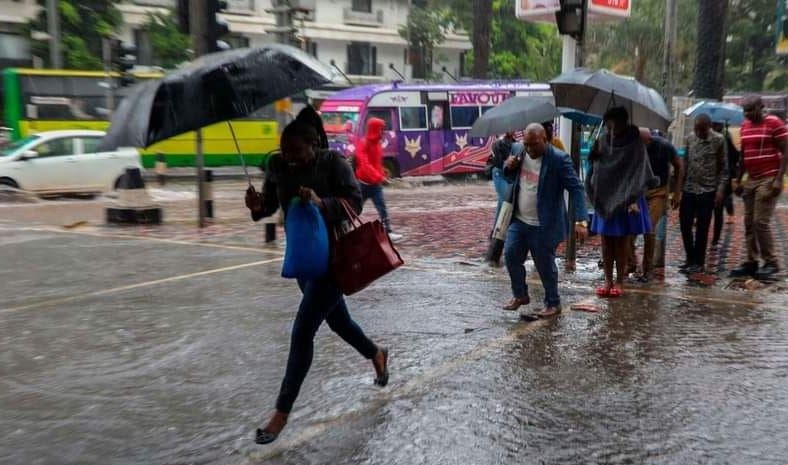Researchers have discovered evidence of cancer drugs dumped into Lake Victoria, in one analysis of the polluted waters.
The researchers said the pharmaceuticals also included traces of antibiotics such as TB drugs.
It is possible hospitals and other health facilities around the lake dump medical waste into the lake, which produces the iconic tilapia fish widely popular across Kenya, they said.
The drug traces were found in some parts of the Winam gulf, which stretches across Kisumu, Homa Bay, Migori, Busia, and Siaya counties.
With a population of nearly 400,000, the area is home to bustling small-scale agricultural markets, fishing activities, and industries.
“The medications that were broken down were isoniazid (TB drug), azathioprine (treats immune diseases) and mercaptopurine (treats leukaemia), irinotecan (cancers), and fluorouracil (cancers),” the researchers said.
The study was conducted by a team of scientists from Masinde Muliro University of Science and Technology, Moi University and the University of Uppsala of Sweden. Results are published in the current edition of BioMed Research International journal.
The researchers noted dumping drugs into the lake is directly harmful and could lead to drug resistance.
“Aquatic pollution due to pharmaceuticals including antibiotics is known to lead to antibiotic resistance in natural microbial assemblages, and several species of bacteria found in such a polluted environment have been reported to harbor antibiotic resistance genes,” they said.
The study comes as senators on Monday launched a probe to identify entities and indirect contributors that discharge raw waste into Lake Victoria.
Nominated Senator Beatrice Ogolla, who is seeking a statement from the Committee on Land, Environment and Natural Resources, wants the probe to outline types and treatment levels of waste being discharged into the lake.
“State the regulatory framework governing the disposal of waste by these entities into Lake Victoria considering the transnational nature of the lake,” she stated.
The researchers, who did not blame any institution, said the Winam gulf has several commercial outlets such as supermarkets, educational facilities with a high student population such as RIAT, Kisumu National Polytechnic, Maseno University, and Great Lakes University.
“Other major establishments include health and research facilities such as the Kenya Medical Research Institute (Kemri), Jaramogi Oginga Odinga Teaching and County Referral Hospital, and several privately owned hospitals and clinics,” they said.
Their study is titled: “Shotgun Metagenomic Analyses of Microbial Assemblages in the Aquatic Ecosystem of Winam Gulf of Lake Victoria, Kenya Reveals Multiclass Pollution.”
They said although there was already evidence of both industrial and wastewater discharge into the lake, there was a paucity of data on the microbial profiles of the ecosystem.
Their study, therefore, sought to investigate the profiles of microbial assemblages in the Winam Gulf ecosystem. Water and sediment samples were collected from several locations within the gulf.
Analyses revealed three major kingdoms of pathogens. The presence of carbohydrate metabolism genes and enzymes inferred organic pollution from sewage and agricultural runoffs. Similarly, the presence of xylene and nutrotoluene degradation genes and enzymes inferred industrial pollution into the lake. Drug metabolism genes led credence to the possibility of pharmaceutical pollutants in water.
Particularly, the researchers said the presence of Bacteroidetes, which are naturally found in the human gut, is important because they have been reported to have carcinogenic effects on humans and animals.
“We hypothesize that the numerous cancer cases that have been reported in the region near the Lake Victoria are probably due to the pollution from the Winam Gulf,” they added.
“It is important for the scientific community to look into the potential risks posed by these pollutants to fish and human health.”
Kisumu Water and Sewerage Company (Kiwasco), which was not mentioned in the report, has already distanced itself from the mess. Managing director Tom Odongo said its two treatment plants are able to handle both domestic and industrial waste to the required standards.
“They are not sewer treatment plants but Water Resource Recovery Centres where we recover the wastewater, treat it, make it environmentally friendly, and release it back to the water bodies.
On domestic waste, all of them go to the sewer lines and end up for treatment.
Also, most industries around Kisumu City have good pre-treatment waste facilities in line with the Environmental Management and Coordination Act (ENCA),” Odongo told KNA recently.
Former government pathologist and cancer specialist Dr Geoffrey Mutuma told the Star that cancer drugs are hazardous and must be disposed of properly.
“They have a lot of impact and that’s why they are stored separately from the rest of the drugs. Hospital staff give them in chemo chambers and you must put on masks and gloves to handle them. Some can destroy blood cells. They’re very dangerous because they kill cells indiscriminately, including digestive cells,” he said.
“They must be disposed of according to medical waste disposal protocols. They’re actually destroyed differently from other medical drugs.”
The study comes as 16 countries meet in Nairobi to review common policies to fight antimicrobial resistance, the growing threat of germs such as bacteria becoming resistant to drugs commonly used to treat them.
The event is organised by the Africa Centres for Disease Control and Prevention and the East, Central, and Southern Africa Health Community, aimed to address the urgent and multifaceted challenge of AMR.
AMR focal point for Kenya coordinator Dr Emmanuel Tanui said delegates are expected to collaborate on a regional network for harmonised action against AMR.














